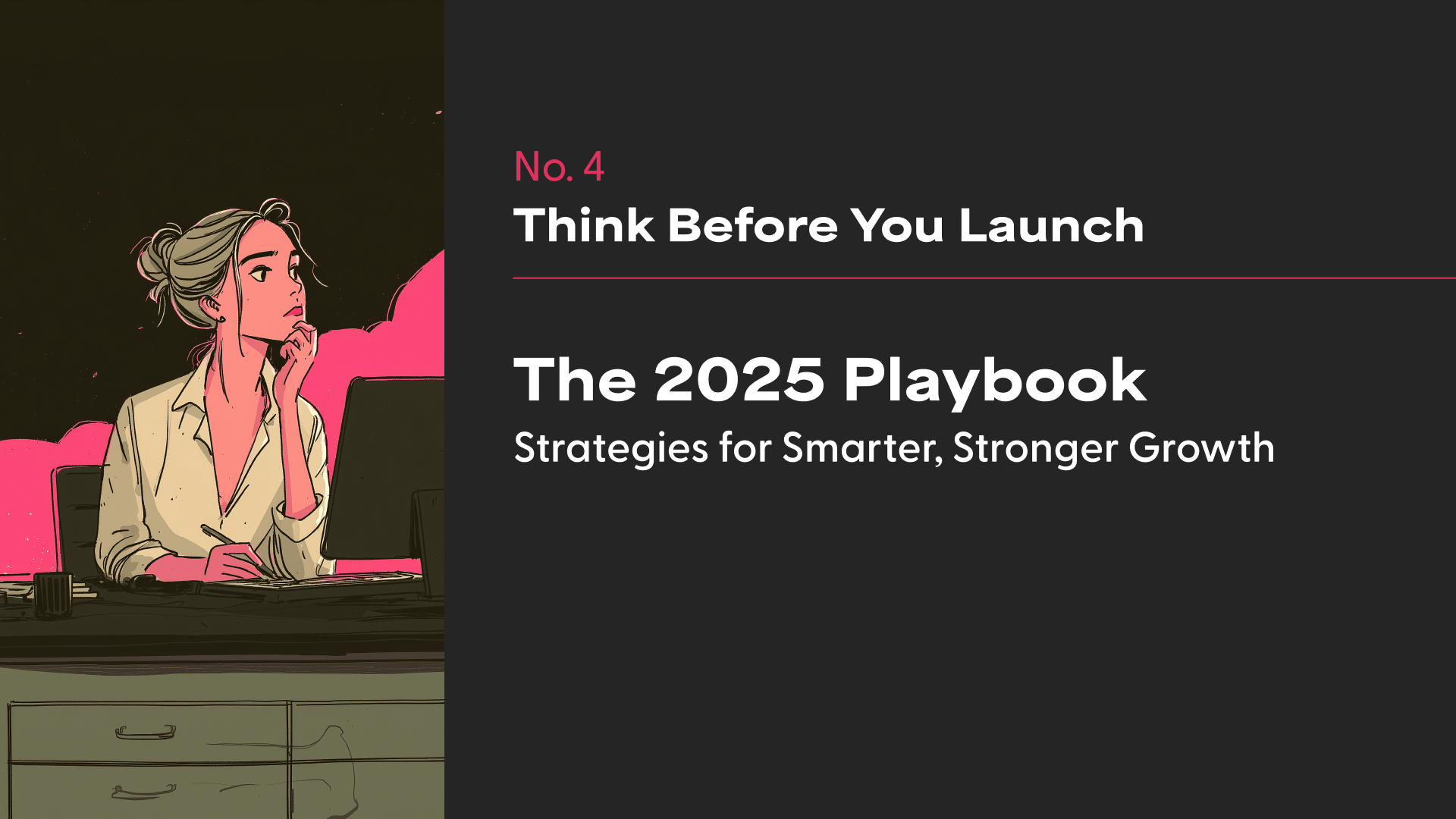The startup world celebrates “move fast and break things,” B2B brands are at risk of sprinting past the very foundation that makes their work matter. Too often, teams dive into messaging, websites, and campaigns before they’ve answered basic questions: Who are we? Who do we serve? What makes us different?
That’s where a strategy-first mindset comes in. It forces us to slow down—deliberately and productively—before we go full throttle. Here’s why every modern B2B brand should make research and strategic planning the first item on their to-do list.
Speed isn’t agility
It’s tempting to churn out a new website or launch a rebrand in record time. But “speed” is not the same as “nimble.” Speed is full throttle; agility is light on your feet. When you sprint without a plan, you risk barreling so far down one path that pivoting feels impossible—and costly.
A well-scoped strategy session, by contrast, acts as your GPS. It surfaces hidden turns and blind spots before you invest precious time and budget. When market feedback or internal shifts demand a new direction, you’re ready to pivot without tearing everything down.
Research unlocks real insights
Bulletproofing your positioning starts with listening. Competitive audits, customer interviews, and market scans unearth the gaps and white space your brand can own. It’s not glamorous, but it’s essential.
And thanks to AI—tools like ChatGPT for sentiment analysis or Midjourney for rapid mood-boarding—there’s no excuse to skip it. What once took weeks of manual sifting can now be distilled into clear opportunity areas in days or even hours. When your strategy is built on evidence, the only variable left is execution.
Data-driven positioning reduces risk
Imagine you’ve drafted a bold new tagline or chosen a new product category. Without research, that decision is a guess. With research, it’s a data-driven hypothesis.
Armed with insights—survey results, keyword data, competitive comparisons—you can quantify how your audience thinks, what language they use, and which channels resonate. That means your creative team can focus on crafting striking visuals and persuasive copy, rather than wrestling with “Will this even land?”
A strategic playbook becomes your north star
Your strategy document is more than a launchpad; it’s a living artifact. It captures the rationale behind every choice—why you target Segment A over Segment B, why you focus on Feature X rather than Feature Y, why this messaging framework aligns with your business goals.
Months (or years) later, when new stakeholders join or you need to evaluate past campaigns, that playbook answers the “why” and streamlines decision-making. It prevents the cycle of reinventing the wheel and preserves institutional knowledge.
When to lean in—and when to let go
“Strategy-first” doesn’t mean “strategy-only.” There’s a point of diminishing returns when over-analysis stalls progress. The sweet spot? Enough upfront research to define a clear position, followed by rapid iteration on creative and digital assets.
In practice, that might look like:
- Week 1: Discovery workshop and competitive scan (using AI-powered tools to speed the process)
- Week 2: Strategy framework with positioning statement, messaging pillars, and channel priorities
- Week 3+: Creative sprint—design, copy, and web development in parallel
That cadence delivers both insight and impact, ensuring your brand work hits the mark—without dragging on.
The payoff: confidence at every touchpoint
Leading with strategy isn’t a luxury; it’s a practical investment in speed and quality. When everyone on your team knows the “why,” they move faster, align more tightly, and deliver work that genuinely resonates with customers.
At the end of the day, a strategy-first mindset doesn’t slow you down—it propels you forward with confidence. And in today’s hyper-competitive B2B landscape, that kind of purposeful momentum is the ultimate competitive advantage.



